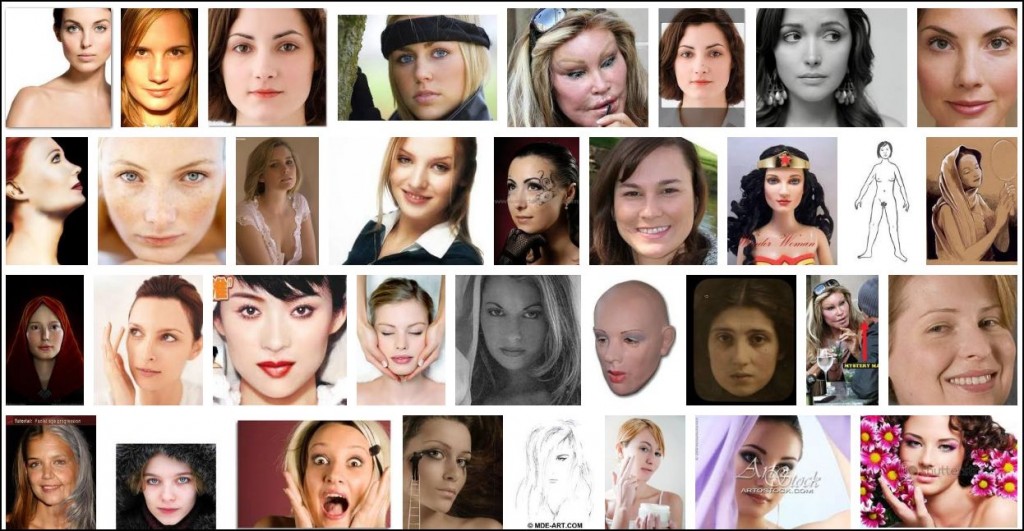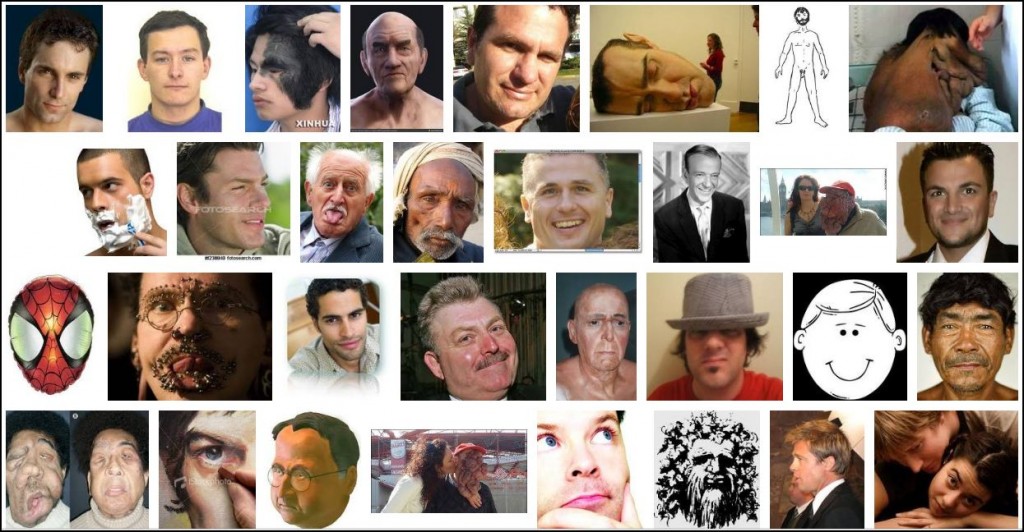Cross-posted at Adios Barbie.
Today I had the pleasure of reading a 1978 essay by Susan Sontag titled The Double Standard of Aging. I was struck by how plainly and convincingly she described the role of attractiveness in men’s and women’s lives:
[For women, o]nly one standard of female beauty is sanctioned: the girl.
The great advantage men have is that our culture allows two standards of male beauty: the boy and the man. The beauty of a boy resembles the beauty of a girl. In both sexes it is a fragile kind of beauty and flourishes naturally only in the early part of the life-cycle. Happily, men are able to accept themselves under another standard of good looks — heavier, rougher, more thickly built. A man does not grieve when he loses the smooth, unlined, hairless skin of a boy. For he has only exchanged one form of attractiveness for another: the darker skin of a man’s face, roughened by daily shaving, showing the marks of emotion and the normal lines of age.
There is no equivalent of this second standard for women. The single standard of beauty for women dictates that they must go on having clear skin. Every wrinkle, every line, every gray hair, is a defeat. No wonder that no boy minds becoming a man, while even the passage from girlhood to early womanhood is experienced by many women as their downfall, for all women are trained to continue wanting to look like girls.
These words reminded me of an idea for a post submitted by Tom Hudson. Tom was searching for faces to help him draw and was struck by the differences in the results for “woman face” and “man face”:
The wide variety of men’s faces, compared to the overwhelming homogeneity of the women’s faces, nicely illustrates Sontag’s point. Women’s faces are important and valorized for only one thing: girlish beauty. Men’s faces, on the other hand, are notable for being interesting, weird, wizened, humorous, and more.
On another note, the invisible but near total dominance of whiteness is worth acknowledging.
Lisa Wade, PhD is an Associate Professor at Tulane University. She is the author of American Hookup, a book about college sexual culture; a textbook about gender; and a forthcoming introductory text: Terrible Magnificent Sociology. You can follow her on Twitter and Instagram.


Comments 38
Umlud — February 4, 2011
Interestingly (perhaps), if you did a search for "female face" (as I just did), you will get a similar range of faces to what is shown (although there are more computer generated faces). However, if you did a search for "male face", you will find a much narrower range of faces (in addition to more computer generated faces) than "man face".
Just an observation.
Chlorine — February 4, 2011
Beauty of "the woman" versus "the girl" = additional makeup and cleavage.
Leslie — February 4, 2011
Fantastic essay, thanks for linking!
et — February 4, 2011
Who is The Most Interesting Man in the World?
http://www.boingboing.net/2011/02/04/who-is-the-most-inte.html
Does anyone think "The most interesting woman in the world" would be over 70 years old?
Marc Taro Holmes — February 4, 2011
Ok I get that 'studies show' that advertising and the media have a strong impact on our casual attitudes. (The things we do and say without thinking). I get that we might be 'trended' to certian attitudes if we are not focused on a real situation.
But I just don't believe that people fail to find beautiful women at all ages.
just because media is full of a certain images does not mean that REAL HUMANS believe this whole-heatedly.
Young people might feel youth is the only possible kind of beauty - but ask anyone over 35 and I really don't think you'll find they're all brainwashed media zombies.
Actual people have deeper thoughts than Google searching.
Ann — February 4, 2011
Marc - as someone over 35, I also don't believe that we are all brainwashed media zombies. However I might feel more sanguine about these media images, as you are, if it were not for the plastic surgery statistics that come out every year - and it's not just people under 35 (or Heidi Montag)driving these statistics. The media does not "make us" do things or "brainwash" us. But it certainly influences our behaviors and that IS a valid sociological point to be made.
thewhatifgirl — February 5, 2011
The interesting thing to me about the "near total dominance of whiteness" is that it is even more dominant in the picture of women's faces than it is in the picture of men's faces. Even the women's faces that might be seen as "ethnic" are very pale for the most part; I almost didn't pick out the Asian woman's face (3 over and 3 down) because it is the same peachy tone as all of the others. It's an excellent example of how women of color are often left out of the category "woman" altogether.
Sociological Images und die Grundannahmen des Genderfeminismus « Alles Evolution — February 5, 2011
[...] Beauty and the Double Standard of Aging [...]
moionfire — February 10, 2011
I agree. The whiteness of the women in comparison to the men is shocking. I am surprised only one other person noted this...
Beauty and the Double Standard of Aging | Adios Barbie — November 11, 2011
[...] Cross-posted from Sociological Images [...]
Nicole Natale — June 24, 2012
The happiest people I know, women included, don't even bother their minds thinking about this shit.
Esser2 — August 11, 2013
The comparative photoraph(s) doesn't cite methodology or origin and can be easily skewed to support the argument. There is just as many photos of young men as there are of young woman available. If I pulled all my samples out of Ebony magazine it would look like a totally different bias. Many parts of our society have evolved since 1978. It's naïve to think that both sexes aren't attracted to younger people than themselves, especially if they are insecure, vain and wealthy. This has been the case throughout the ages and I'm sure it will continue to be. Take a trip on a Luxury liner and you will see more elderly woman in the company of younger men than vice versa.
Jennifer Miller — August 11, 2013
We would need to do an investigation to find the algorithm that is being used to generate the search. What exactly is Google using to find these images? They are not using anything that would require coding... it must be a search of what the images are named and the textual content on the web page.
littleup — August 11, 2013
This phenomenon has the biological background of fertility; women lose it long before men do. We don't have to beat ourselves up for having this standard, as it used to have some actual significance. It is, however, high time to lose the coupling of beauty standards and fertility that evolution has bestowed upon us. What is beautiful in this day and age is character.
Nicole Natale — August 11, 2013
Kali & Jennifer: women who garden, bike ride, surf, hike, look for joy...I guess I had to spell it out for the two of you.
Don't bother answering me back...not interested.
emlonfabulon — August 11, 2013
I am seeing a publication date at the bottom of each page of the article as September 23, 1972, not 1978. Not that the completely spot-on accuracy of the content has changed one iota, give-or-take 6 more years.
Diane Moffatt — August 12, 2013
Georgia O'Keffe.
Why Do We Seem to Only Celebrate Women Who Are Both Cute and Sexy? — September 24, 2013
[...] does it mean that feminine beauty is conflated with youthfulness, but masculine beauty is not, that we want women to be both cute and sexual? It means that we feel comfortable with women who [...]
Women, beauty and age | A Bee of a Certain Age — April 29, 2014
[…] a post on Sociological Images, referencing Sontag, and looking at the differences between the images that come up if you google, “woman face”, and “man face”. It makes Sontag’s point, that women are supposed to be young, with symmetrical, unlined, […]
A SOCIEDADE QUE INFANTILIZA MULHERES E SEXUALIZA MENINAS | MANHAS & MANHÃS — October 3, 2014
[…] Esses imperativos são aprendidos desde cedo. O que significa que a beleza feminina seja associada à juventude, e a masculina não -– que queremos que as mulheres sejam graciosas e sensuais? Significa que nos […]
Eso que llamas cosificación masculina… no lo es. | Eugenia Andino — July 20, 2015
[…] perfumadas, peinadas y planchadas. Los hombres, pues no. Alguna recomendación de lectura: hay un solo modelo de belleza femenina, y muchos de hombres. Todos los personajes femeninos de todas las películas de Pixar tienen la misma cara (que es, […]
Someday in a Galaxy far far away women will be allowed to just …be | My Writing Place is by a Lake — January 1, 2016
[…] I found this article that quotes some interesting research from 1974. http://thesocietypages.org/socimages/2011/02/04/susan-sontag-on-the-three-standards-of-beauty-girl-b… […]
A Wrinkle in the Plan: Self-Care and Ageing Part 1 | Tiffany Sostar — May 15, 2017
[…] Wade’s short article (with a link to the original Sontag essay): Beauty and the Double Standard of Aging. (Note on both this article and the linked essay: cisnormative […]